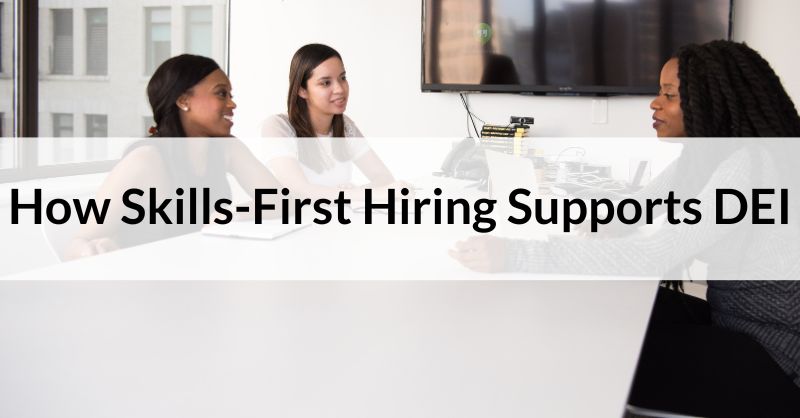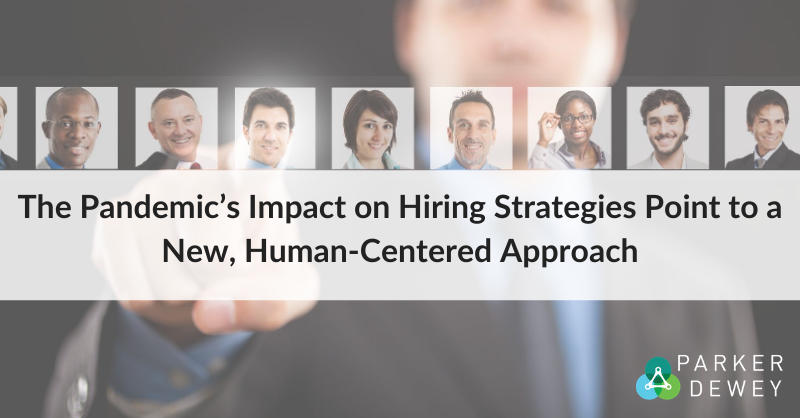
How Skills-First Hiring Supports DEI
Last week, I touched on the benefits of skills-first hiring and why now is the time to incorporate this approach into your recruiting efforts. Skills-first hiring not only lessens the weight of academic pedigree and improves the hiring process. When implemented well, it also supports your organization’s DEI efforts.
But as highlighted in the article below, using a skills-first model to further DEI requires complementary practices, like creating access for candidates who may be unable to interview in person, sourcing candidates through partner organizations, and streamlining the application process to reduce the number of hoops candidates (and hiring managers) must jump through. And as we’ve seen during the past six years, it’s not difficult to accomplish this through the use of Micro-Internships.
If you’re in need of a place to start, we recently shared five opportunities to introduce Micro-Internships at your organization. See them here.
Jeffrey Moss, Founder and CEO
Articles of the Week
Skills-Based Hiring Alone Won’t Solve Your Inclusion Problem - Forbes
Succeeding in the New Normal: Virtual Recruiting - Parker Dewey
Internal Talent Mobility: Think Projects, Not Jobs! - SHRM
What’s Next for Higher Education - Market Scale
Skills-Based Hiring Alone Won’t Solve Your Inclusion Problem- Forbes
“As they continue to eliminate degree requirements wherever possible, employers must also make a conscious decision to change other practices that fuel inequity.”
How can you ensure your skills-first hiring approach actually enhances DEI at your organization? This article lays out three strategies. What’s more: These practices align with a Micro-Internship program!
Related reading: How Micro-Internships Can Bring Diversity, New Perspectives, and Talent to Employers
Succeeding in the New Normal: Virtual Recruiting -Parker Dewey
“Companies will need to adopt more remote-based programs that create meaningful connections between candidates and current employees, while also helping students to understand how their skills can be applied within the organization.”
Last week, NACE reported that employers expect to hire 7.2% more new college graduates from the Class of 2021. For employers, this trend points to the need for genuine, effective virtual recruiting in order to engage students. This blog post lays out what students are seeking from these digital experiences, based on recommendations from NACE and Mary Scott, Scott Resource Group.
Related reading: Winter 2021: Lessons Learned Going Virtual
Internal Talent Mobility: Think Projects, Not Jobs! -SHRM
“The future of recruiting is in dynamically matching the right talent to the right work, at the right time, without constraining people to an overly narrow job description.”
This article introduces the Inside Gig strategy—breaking jobs into projects and thus allowing employees to redeploy skills where they’re most needed across a company. Through this strategy, organizations can gather a more accurate inventory of skills and expertise.
What’s Next for Higher Education - Market Scale
“A significant number [of students] are going to say, ‘We want to go to places of better value that are online, that do it well, that are lower-cost.’ [...] This will pretty dramatically change how we think of higher ed in years to come.”
In this interview, higher education expert and author Michael Horn discusses the pandemic’s effects on the education landscape, where online learning comes in, and what these shifts could mean for employers.
Related reading: Micro-Internships and the Benefits of Remote Work for Students
For more stories and insights on HR, recruiting, and diversity, click here to subscribe to our weekly newsletter Hire Learnings.




